
Since beginning my search for working alternatives to industrial civilisation, I have seen many beautiful projects, places and communities. It has been a joy to see people building new (or rediscovering old) ways of existing with the nature we have so long exploited, new ways of existing with other people in a community structure that we have become alienated from, new ways of existing with themselves after being socialised to ignore their deepest needs and instincts. Many of these projects have successfully created alternative ways of understanding and living. Islands of peace and prosperity, in which life flourishes and humans, and the rest of the natural world, are given the space and time to live out their potential. But few projects are doing so with as clear a vision of transforming society as Lebensgut Cödstädt. Located in a small town at the at the edge of the Thüringen Wald, even a short time here will inspire you to join the grassroots social transformation that’s gaining momentum across the world.
Space
Upon arriving in Cobstädt the first thing that grabbed my attention was the beautiful Fachwerkhäuser that were interspersed around the town. I have lived a number of years in Germany but spent most my time in big cities, which all had to rebuilt after WWII. Because of this I have seen very little pre-modern German architecture. A mix of clay, wood, and stone, the distinctive geometric patterns of the Fachwerkhäuser reflects the world around them, carrying the spirit of the land and the people that produced them. After being directed to Lebensgut I find myself in a small square surrounded by a church, graveyard, and Fachwerkhäuser. In the centre is a chestnut tree about to lose grip on its orange leaves. I ring the bell of one of these houses and am greeted with a smile by one of the founders of the project, Tomas, who promptly gives me a tour and shows me a selection of room I can sleep in.
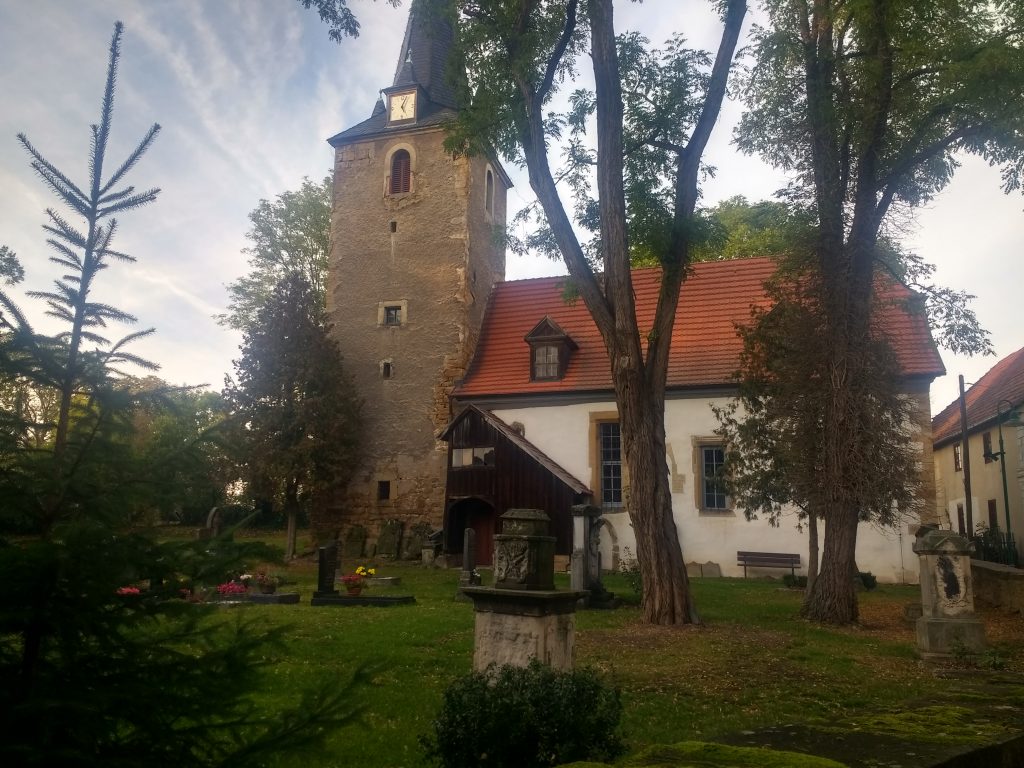
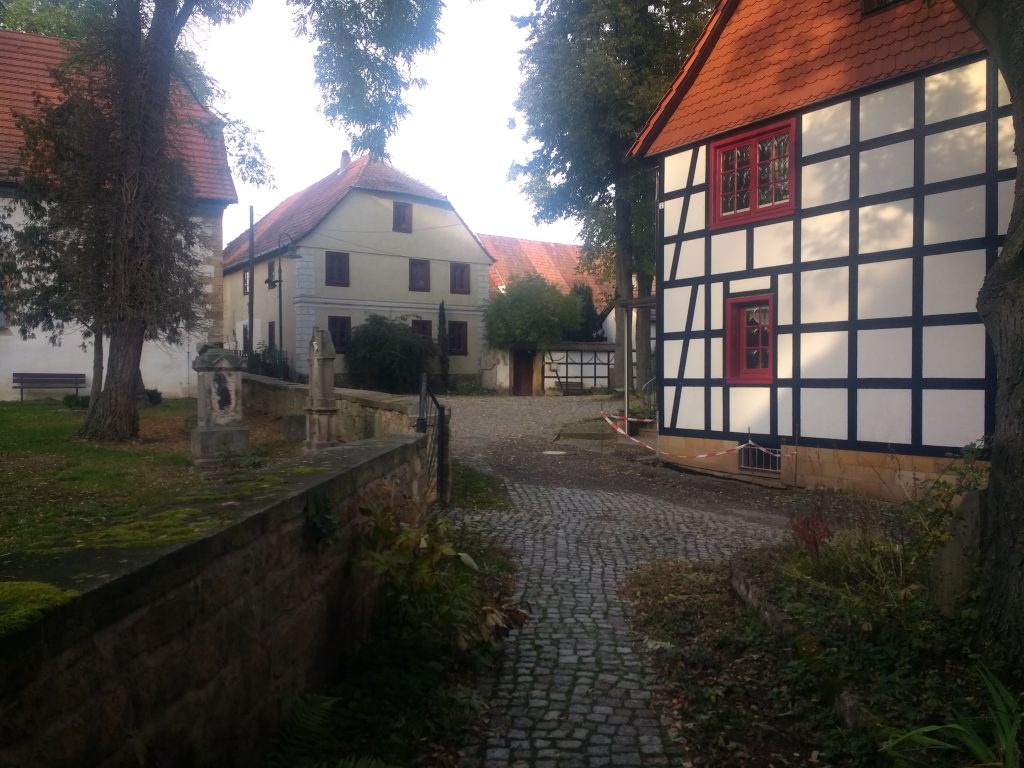
Like all buildings, this Hof gives you a glimpse of the values of its creators. The ‘pilgram’s kitchen’ is primarily made up of wood, stone, metal, and clay, giving it a warm and familiar feeling. It is filled with little hand made art pieces, hand powered kitchen utensils, and two large dining tables for people to gather around at meal times. At the back of the kitchen was a small room with a wood burning stove (already drawing people in on the chilly autumn evenings) and amazing acoustics for the instruments lying around. Moving from the kitchen through a raised wooden terrace into the Hinterhof (an enclosed garden space) one immediately feels the natural tranquillity of the space. On the table are newly harvested mushrooms. Grape and hop vines wrap around the terraces support beams. The garden itself is full of natural and human made beauties; herbs, trees, flowers, old metal cogs, a forge, traditional farming tools, statues of a contemplative Buddha, a mysterious skull that looked most like a giant turtle.
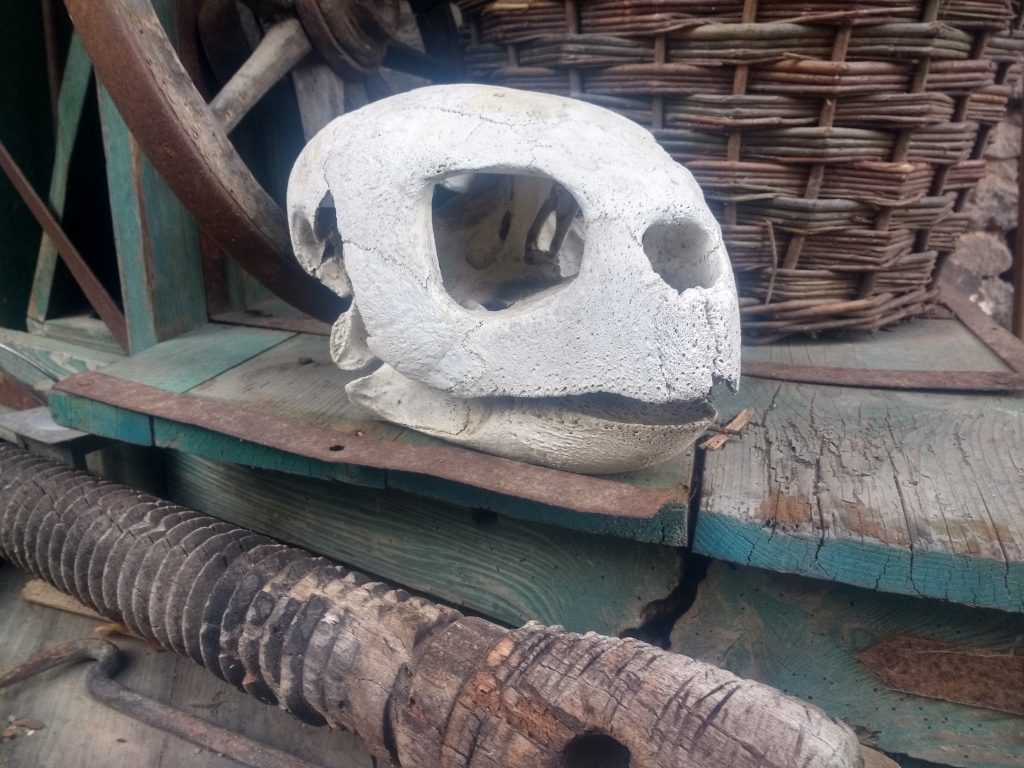
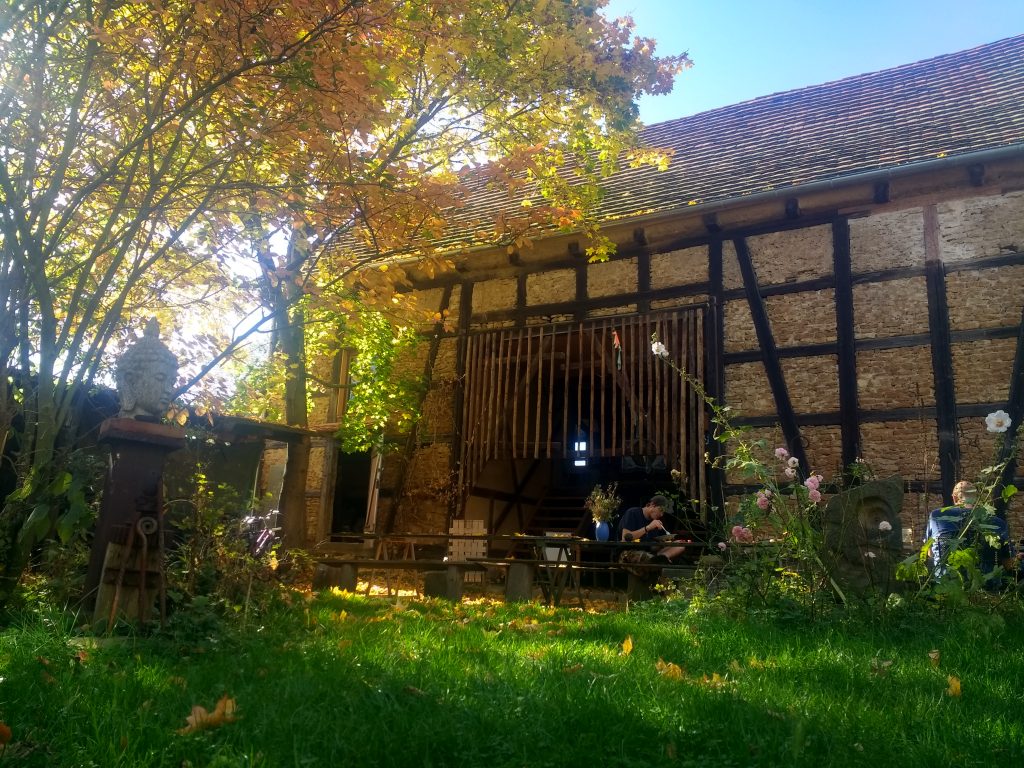
From the Hinterhof you could take in the beauty of the restored Fachwerkhäuser. During the tour Tomas gleefully recounted the difficulty of erecting even one of the huge wooden support during reconstruction. Connected with the main house was a side house which was composed of a workshop a living room and a number of bedrooms. The feeling of naturalness is even stronger in this house because of the sweeping curves that a clay allows for, including faces and patterns formed into the wall. The room that I was staying in was the meditation room. It had a minimalist interior design (a lamp, bed, shelf, and little shrine to Buddha) allowing meditation to flow. Another house (that looks like a wooden barn at the back and a temple at the front) has a main entrance that takes you immediately into a different state of mind. The main room of this energetically charged building is used for group gatherings, and activities such as yoga or meditation. At the side of this building is another kitchen, more used during the busy summer months when the pilgrim’s kitchen gets too crowded.
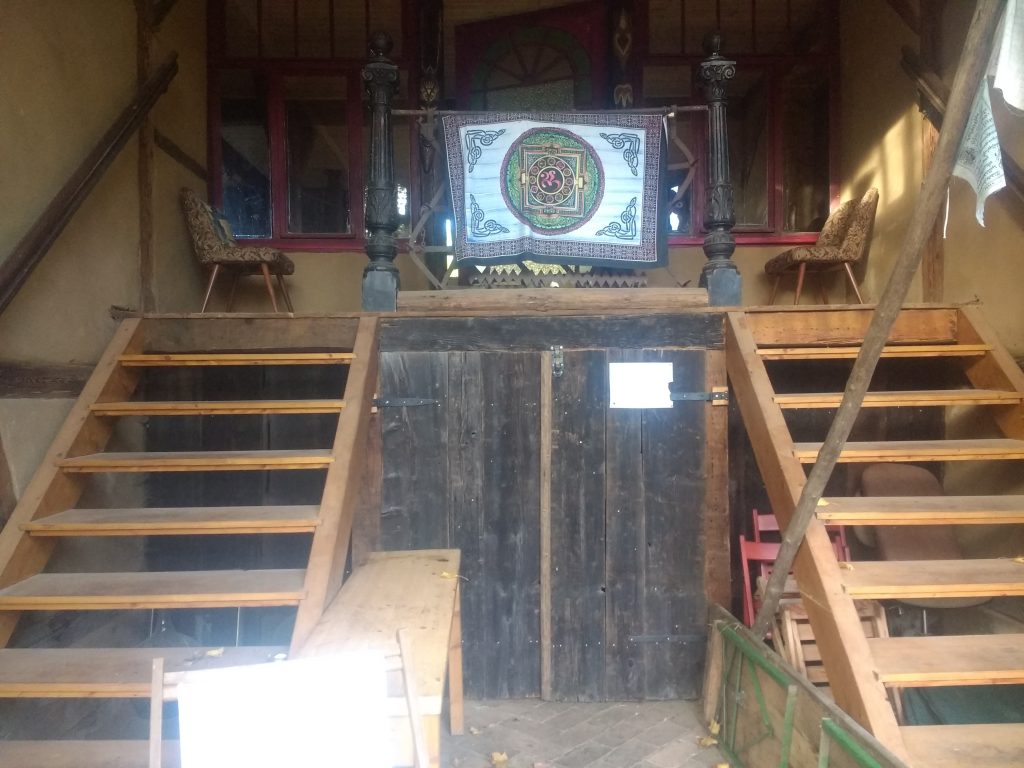
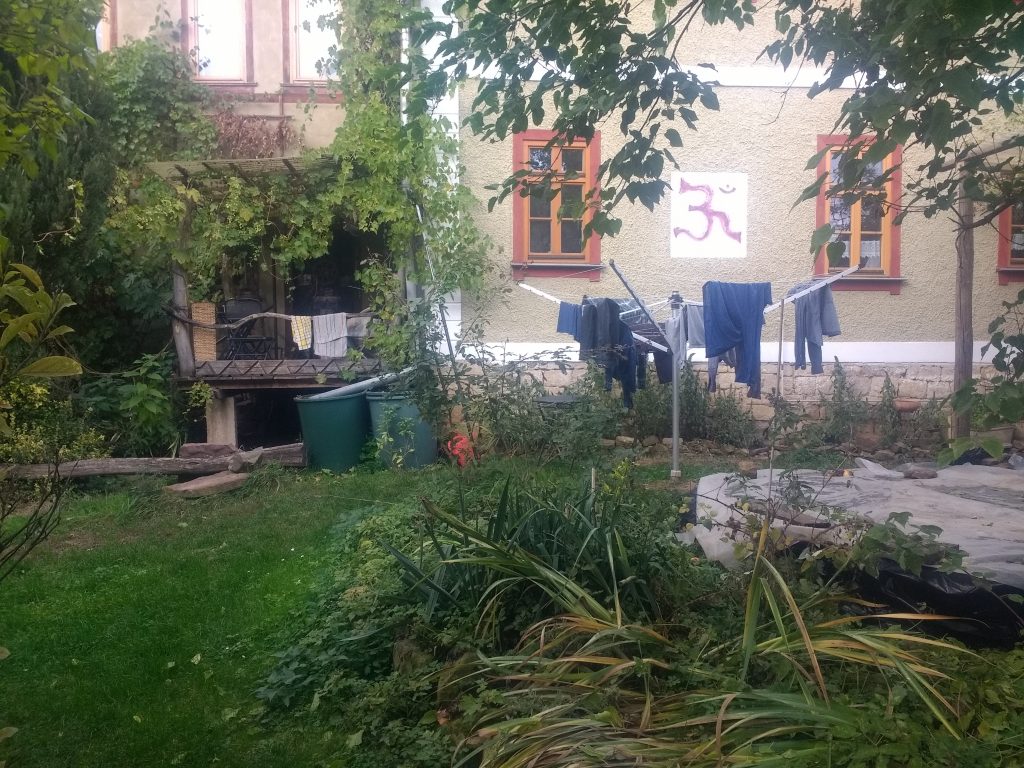
Aside from the living quarters, there is nine hectares of land, used in a variety of ways. Herbs are grown, crops are cultivated. Perhaps because we were already in autumn, and perhaps because it didn’t seem to be the main focus of my host, I didn’t spend so much time in the vegtable gardens. What I saw were a number of fields interspersed with fennel and chard, and at the far end of the land were gardens with a large selections of vegetables. The crops from these gardens were cultivated by the people at Lebensgut and harvested by local people as part of a solidarische landwirtschaft scheme (essentially the same as Community Supported Agriculture). Along with the vegetables, there were two large green houses filled with, and surrounded by, all kinds of herbs. Other features of the land were a huge stone circle, and hand made wind turbines. The wind turbines were made by one of the members of Lebensgut, and blur the boundry between energy production and art. Considering that one of the biggest barriers to the expansion of wind energy is that the people complain they blight a serine country landscape, the project of making these machines not only functional, but also beautiful, seemed to me a useful area of exploration. Also dotted throughout the nine hectares were a variety of Wohnwägen and tinyhouses, in which some people who were part of the project lived, either full or part time.
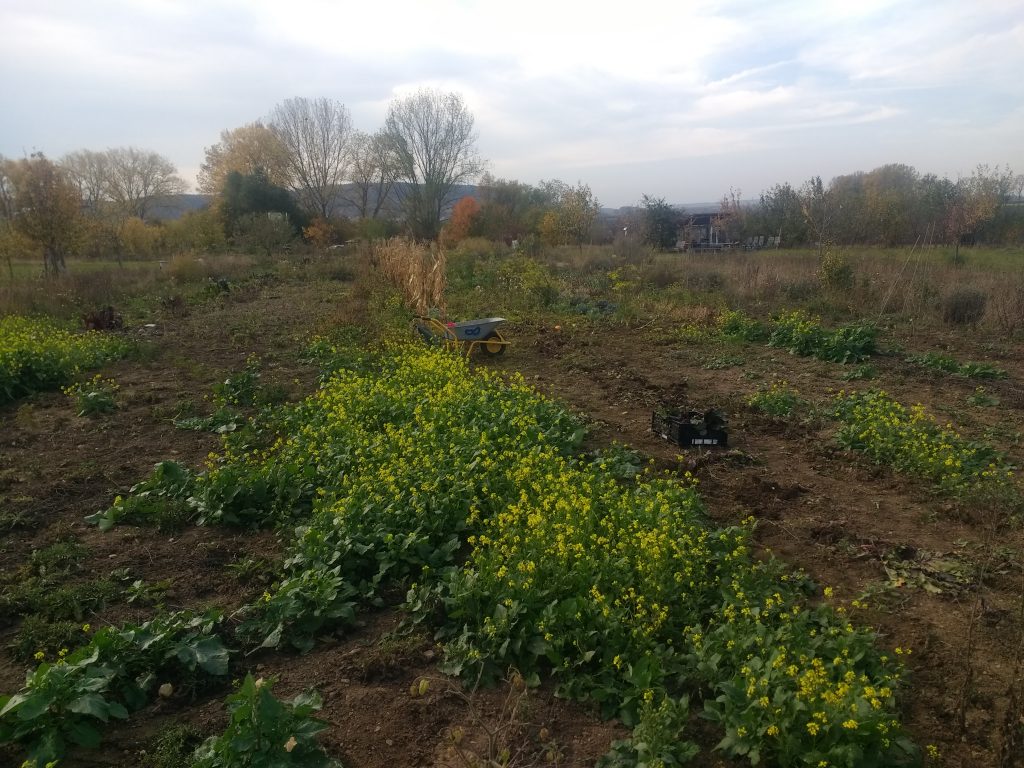
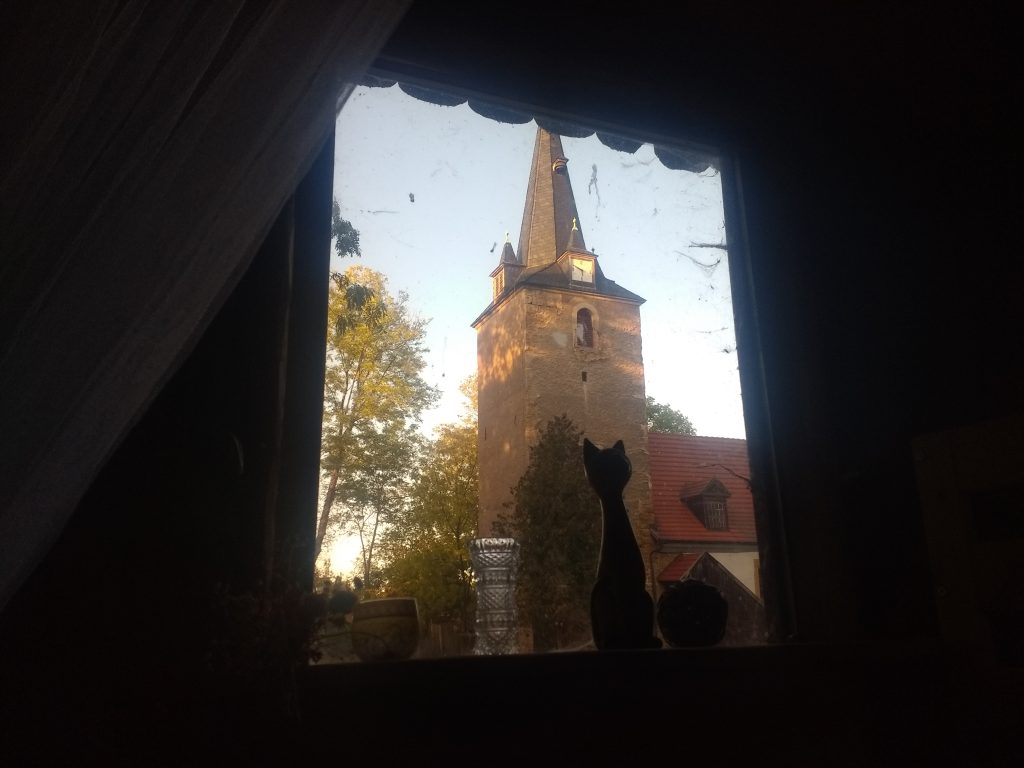
The areas of hectarage where my host Tomas seemed to work with the most passion were the tree nurseries. He proudly beamed that these nurseries had over a thousand species of fruit trees, making them regional centres of genetic diversity. Many of these species are older, wilder, varieties that are now threaten by extinction because of mono-cultural fruit production. During the last 15 year over 3500 trees have been planted here. Some of them are destined to grow old where they were planted, some are to be brought to other locations for children to replant during tree planting actions. This was one of the main activities during my time at Lebensgut, the uprooting of tree in preparation for a number of regional tree planting days. Digging through the damp earth, uncovering the buried roots, I couldn’t help but feel sympathy for the young trees, desperately clinging onto the earth that raised them. They were about to suffer the trauma of being taken from their nursery to a relatively far away land. I tried to console them – this is not the end, you will hopefully good life wherever you are destined to be taken.
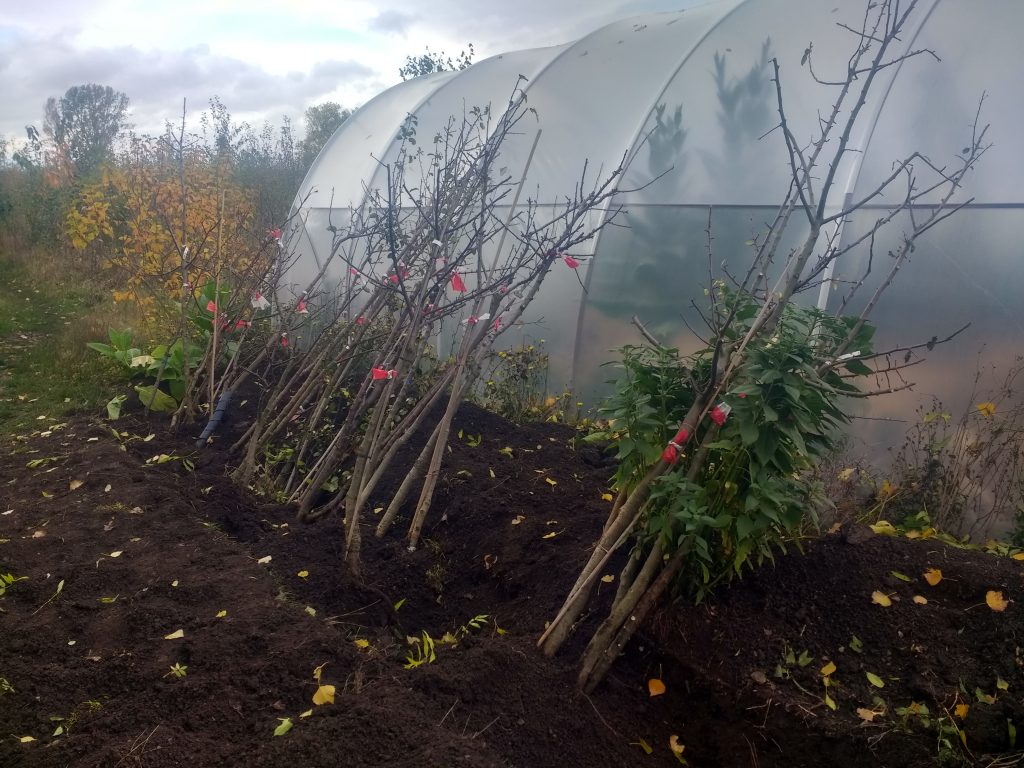
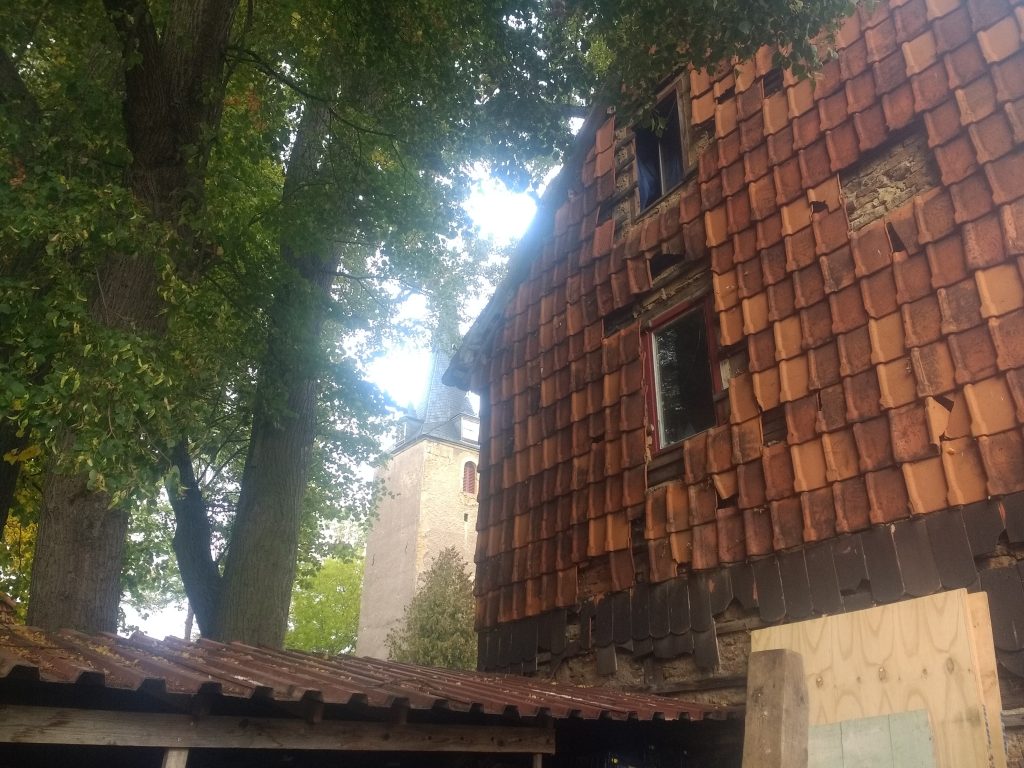
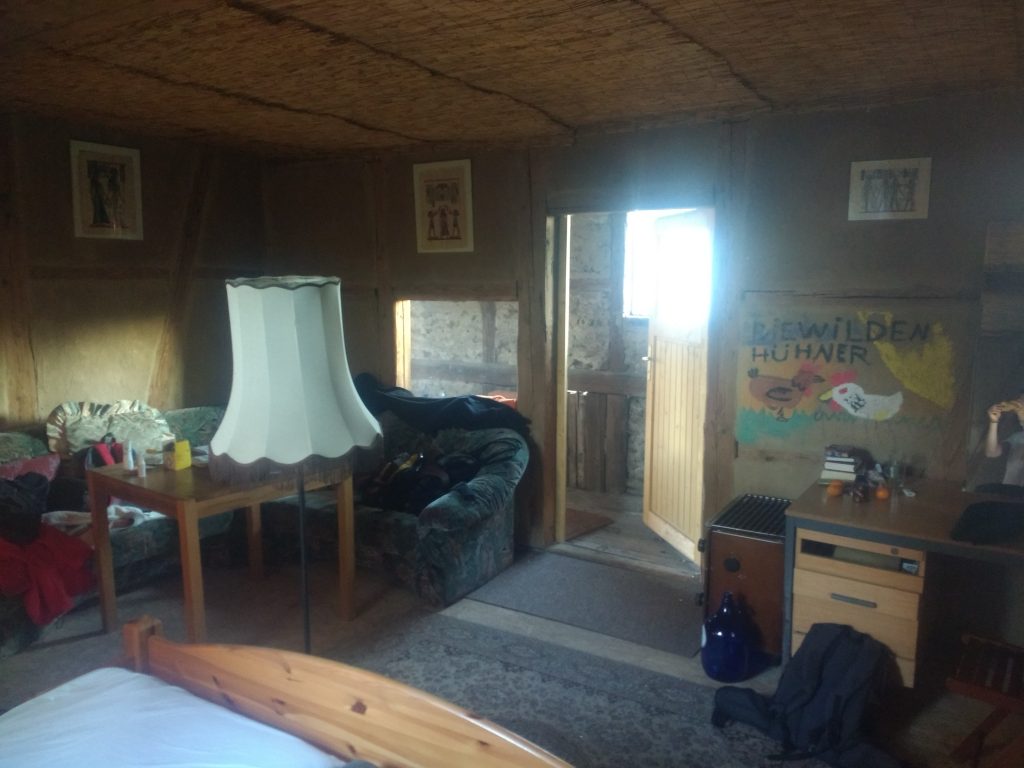
History & Organisational Structure
The main driving force behind this project since the beginning has been the married couple Elisandra and Tomas. They decided that the life in the city, working for a wage, sustaining a destructive and exploitative system was not one they wanted to live. In 2004 they moved from the nearby city of Erfurt to the village of Cobstädt. They didn’t have any money but were able to live in the house and farm the land of a friend. From this starting point, essentially nothing, they have built the project up over the last 15 years through hard work and sheer force of will. I asked Tomas how they did this with no starting capital, and he assured me that there are always ways to get money if you need it, ‘you know how much it costs to plant a tree? Nothing. You know how much you get for it four year later? 50€. You do this a thousand times, that’s 50.000€’.
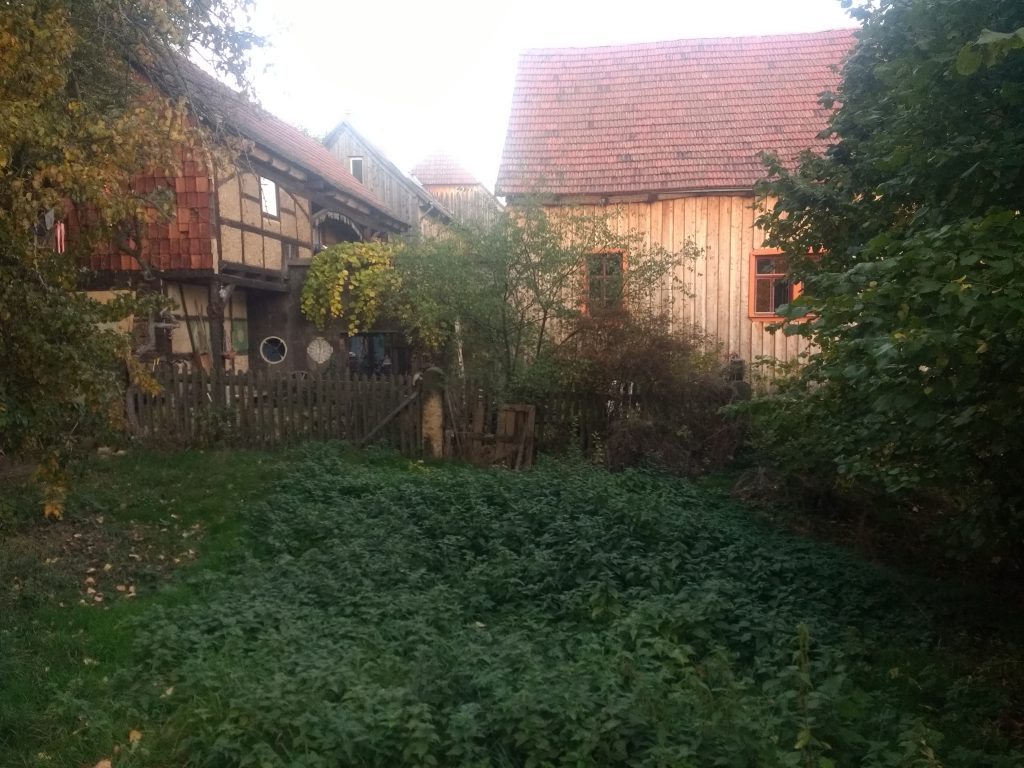
In the beginning it was difficult, living with very little to no money, raising a child, but a few friends joined and together they started to set things up. They renovated old houses, set up the tree nurseries, started to cultivate crops. Things slowly started to take shape. Today the project is made up of 15 adults and four children living in three Höfe (which can be translated as ‘farm’ but they aren’t all involved in agriculture), as well as a number of people living in Bauwägen and tinyhouses. The main Hof was one I have already described. Another Hof, which I didn’t get to visit, is an education centre for children to learn about nature and sustainability.
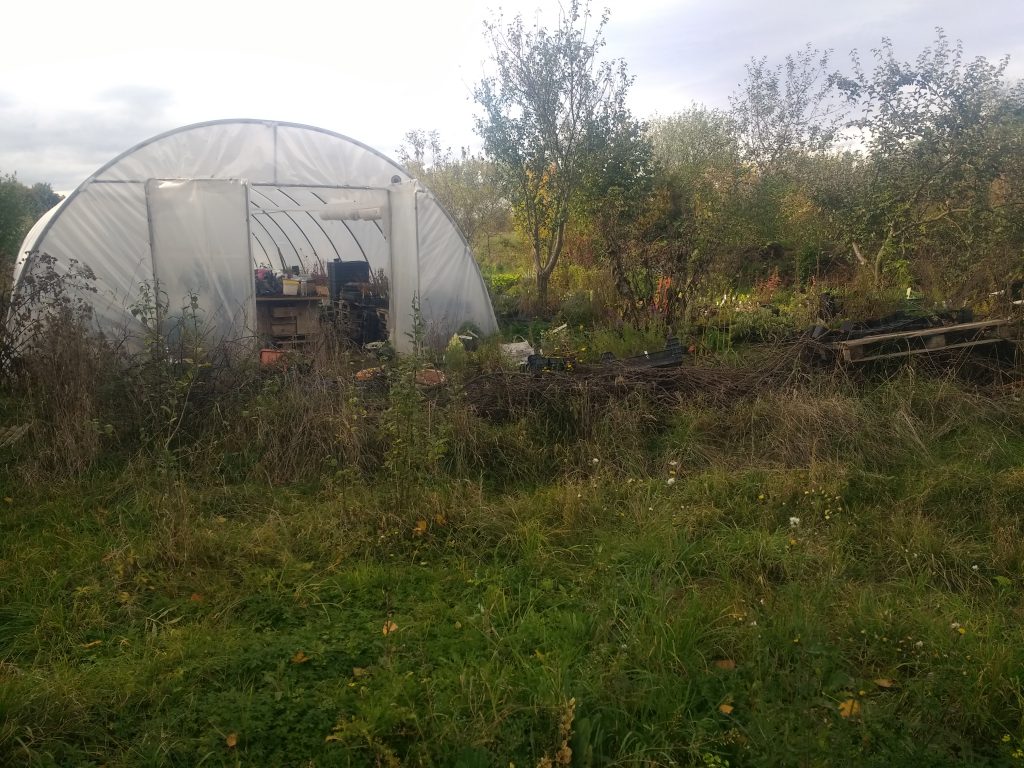
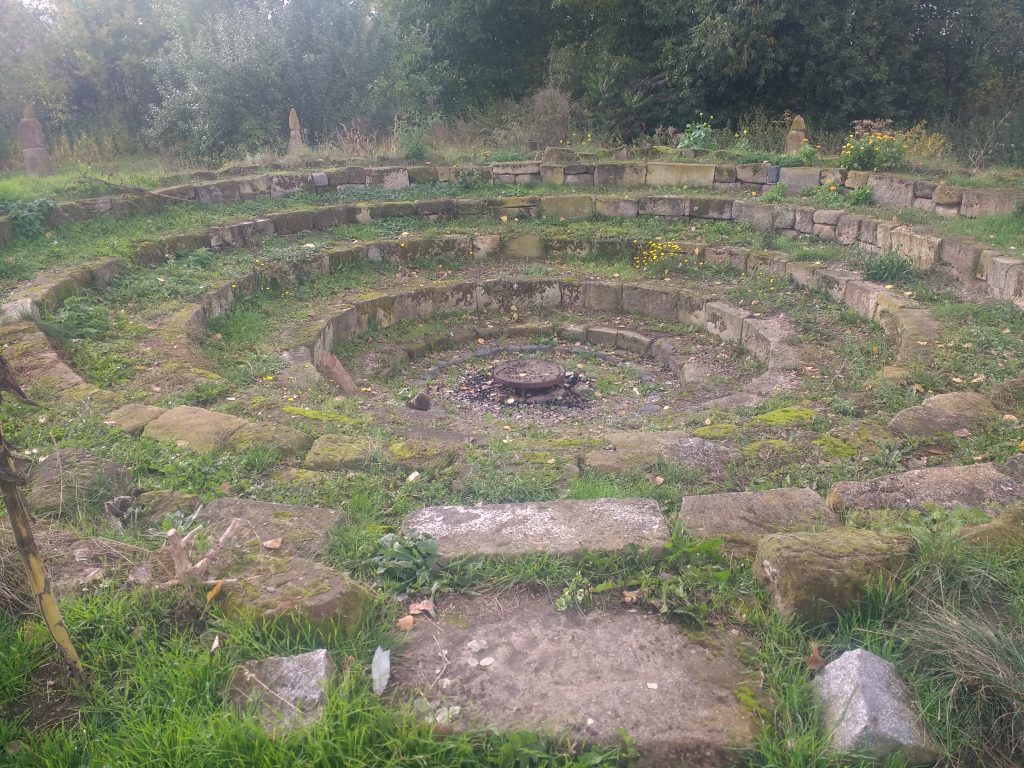
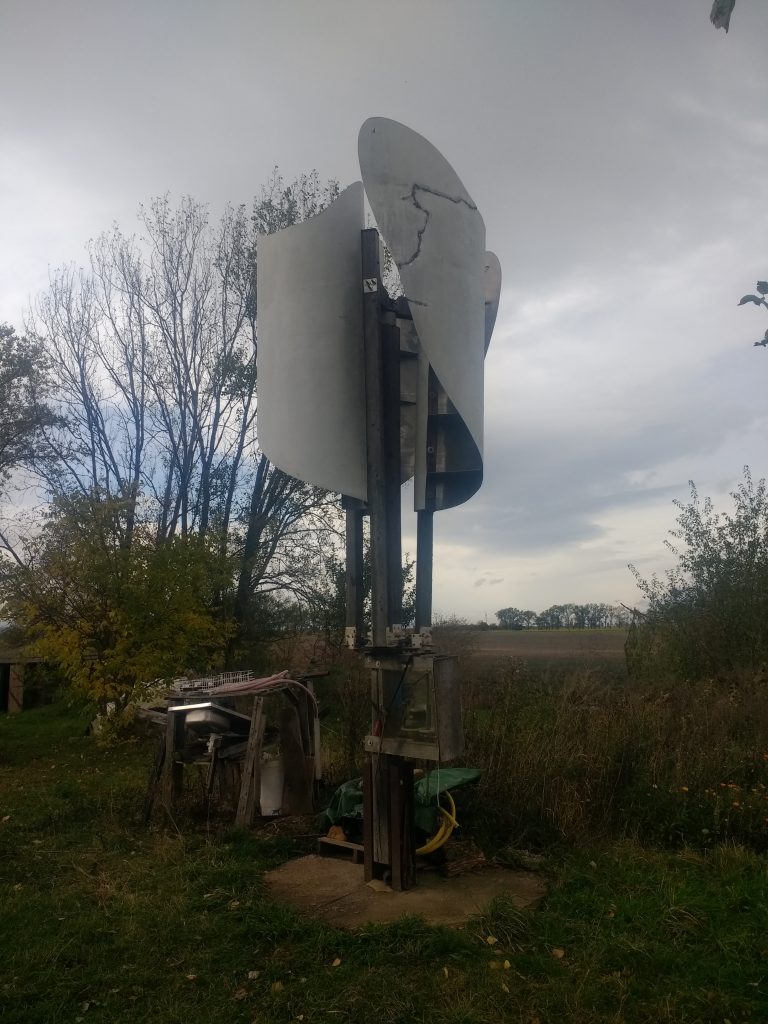
The third Hof is the Honigwein Schenke, which I visited one day to help pressing pears and apples into juice. The people in the Honigwein Schenke, rather than being so focused on agricultural, was made up of metal workers and carpenters. When I was there were two more Bauwägen under construction, there metal frames already welded together. Someone in the workshop told me that there was a lot of plans for the renovating the old 19th century – a second story here, a new balcony there, a new outdoor hallway so they could widen all the the second story rooms. As he was explaining it to me I could see this new spaces spring out of thin air. Human creativity is a beautiful thing. Give someone the space, time, and freedom to create and marvel at what comes of it.
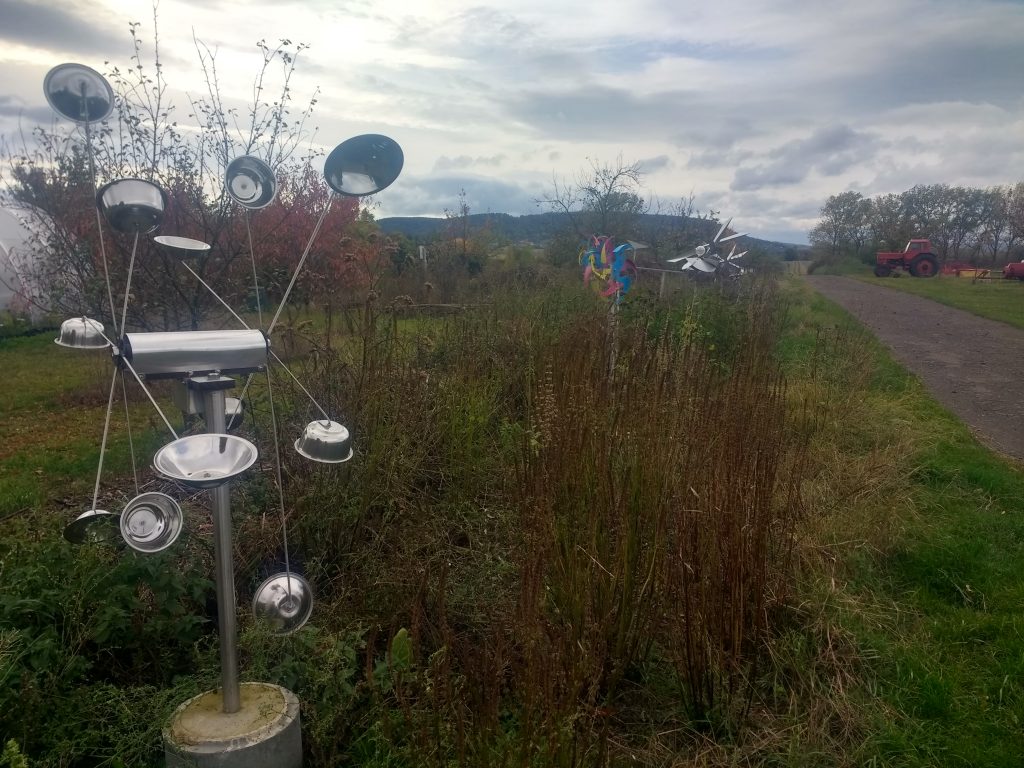
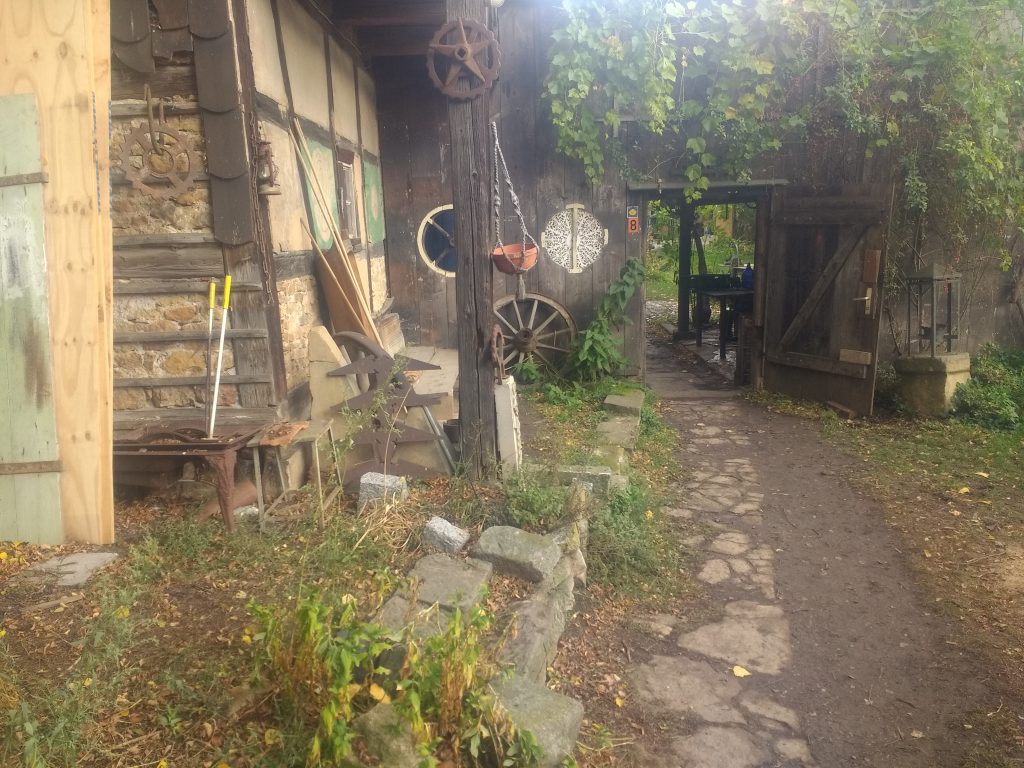
The organisation structure of Lebensgut a mix of both formal and informal networks. In the first place, it is an informal network of friends who all live in the same village, helping each other and working with the same vision in mind (self-sufficiency, harmony with nature, spiritual development and local economy). There is also the formal structure of Lebensgut Cobstädt, which has set itself up as a Verein (kind of like a ‘club’). This formal structure is useful when interacting with government structures, or organisations like the Global Eco Village network. On top of this, Tomas told me of another globally orientated organisation that was being created by the people of Lebensgut. Still in the process of development, his vision was that Eine Neue Erde (A New Earth) would be a global network of many autonomous regional groups, building locally based social and economic structures, and healing the earth through the proliferation of tree nurseries and landscape restoration.
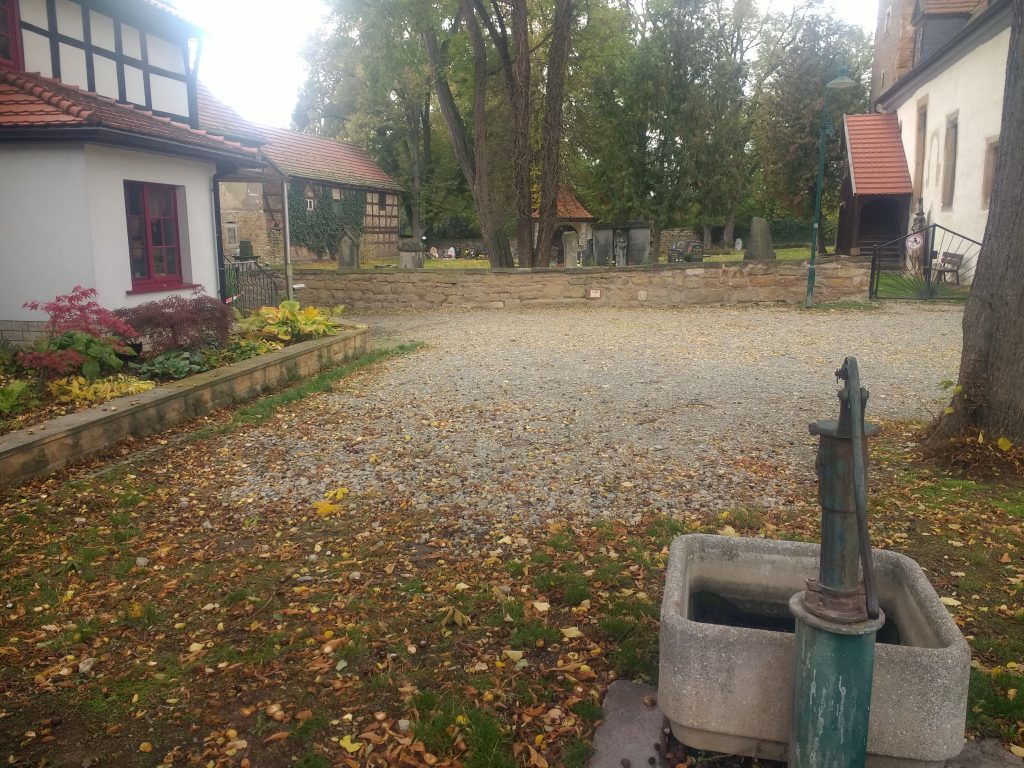
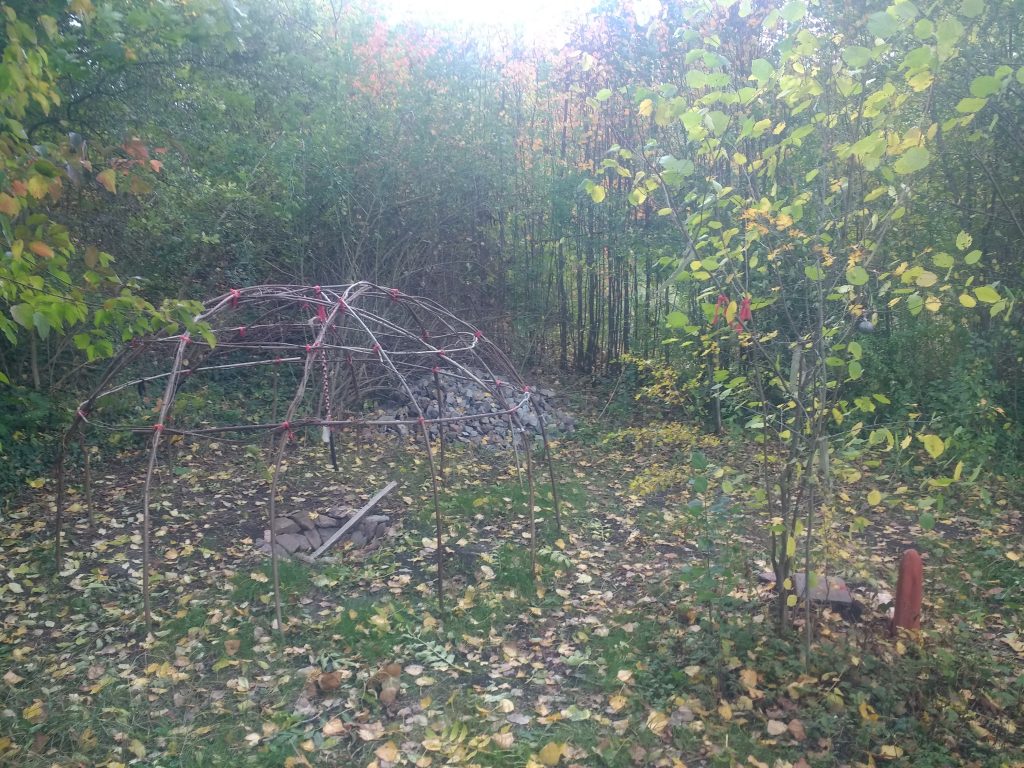
Group & Philosophy
In the main Hof there was about 8 people living permanently, with many more people passing through. Friends would come and stay for a few days, pilgrims would pass through (the Hof was a registered refuge for pilgrims on the Jacobsweg, the German starting point for the camino de santiago). The atmosphere in the Hof was relaxed, with enough space if you wanted some time by yourself, and enough friendly people if you wanted some social energy. Work would take place when there was something to be done. Some days we would work hard (transplanting trees, or harvesting seeds), others only for a couple of hours, sometimes we would take the day to relax).

One thing that I found particularly enlivening was the depth of conversation. While I have been on other projects which are working with almost the same vision, what marked Lebensgut Cobstädt was how consciously this vision was kept in mind. Every day – during mealtimes, when working together, sitting around the fire at night – there was a constant exchange of ideas, hopes, dreams and fears. Often starting at the breakfast, questions on the nature of freedom, love, truth, spiritual progress, or revolutionary strategy were on the table.
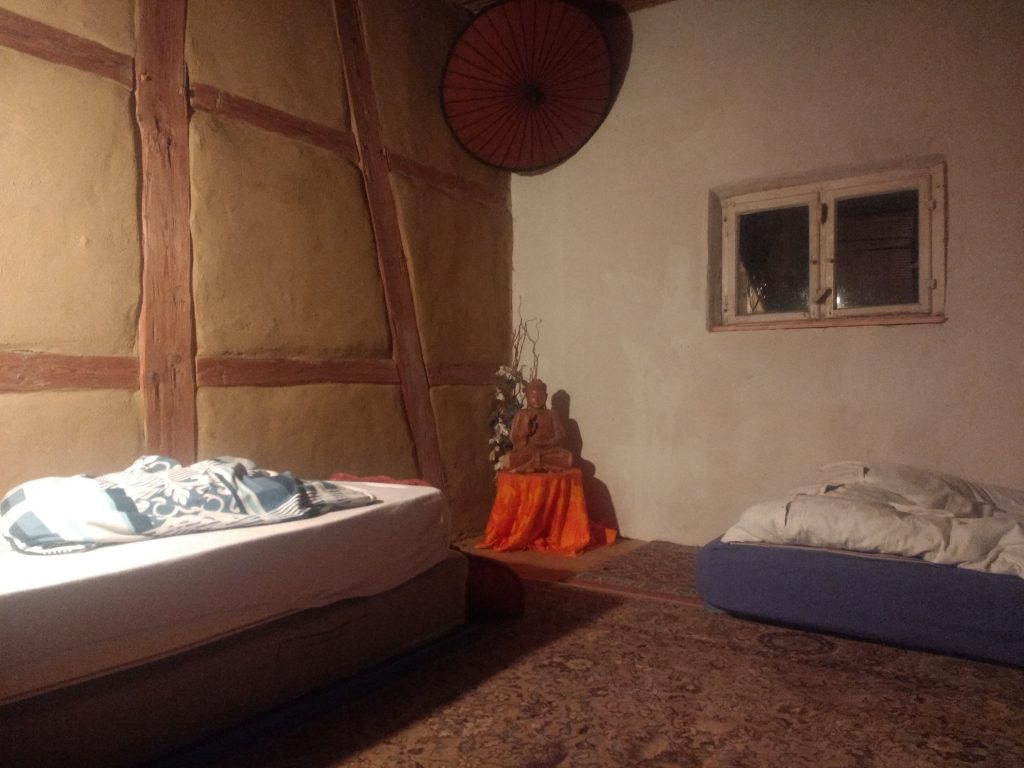
One example was a conversation about Extinction Rebellion, who were starting their international week of actions at the time. The question at hand was – ‘what are the best strategies for societal change?’
‘If all the people out on the streets demanding the government change the system decided to do something themselves, start an eco-village, start a tree nusery, then imagine what could be achieved. Why wait for the government to do something when the power is in our hands?’
‘That may be so’ I replied ‘but just because there are alternatives doesn’t mean the system will just wither away. The powerful have an interest in maintaining the system, and they will use their power to prop up the system until there is nothing left on this earth to exploit. This is why resistance is needed.’
‘That may be so but how does going on the street and saying “we’re against this, against that”, help anything?’
‘A lot of the time there is a concrete list of demands. For example, in Ireland, the Extinction Rebellion people are demanding that the government cancel a on a recently approved fracking project.’
‘Ok, that makes sense, fracking is not good’.
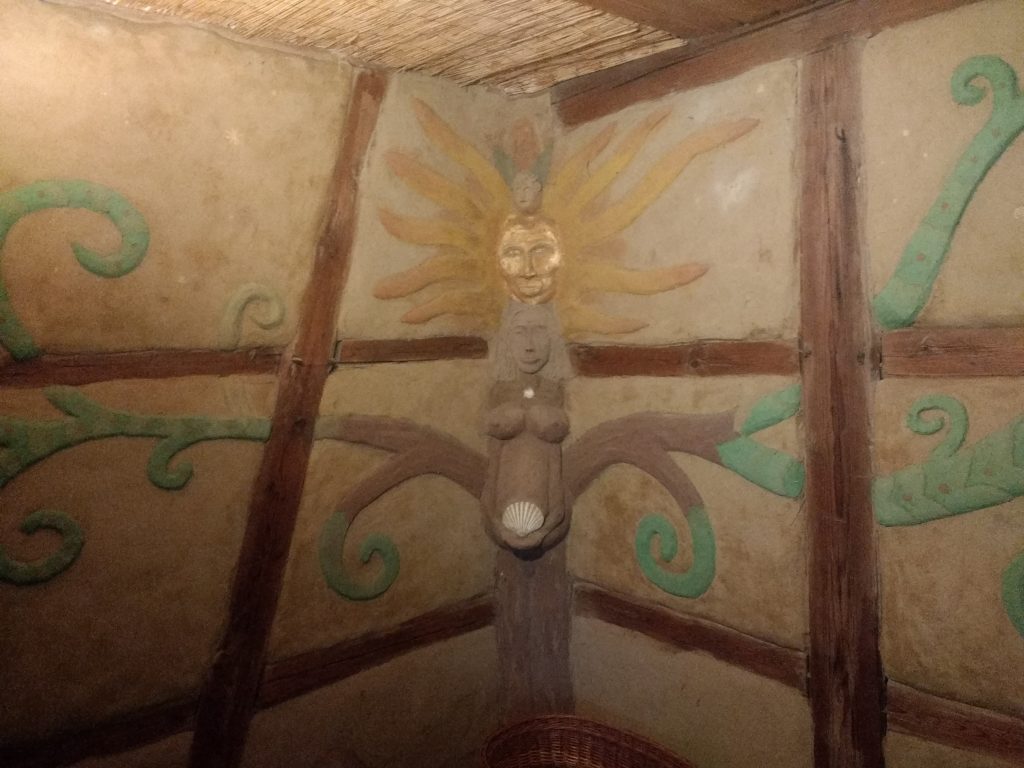
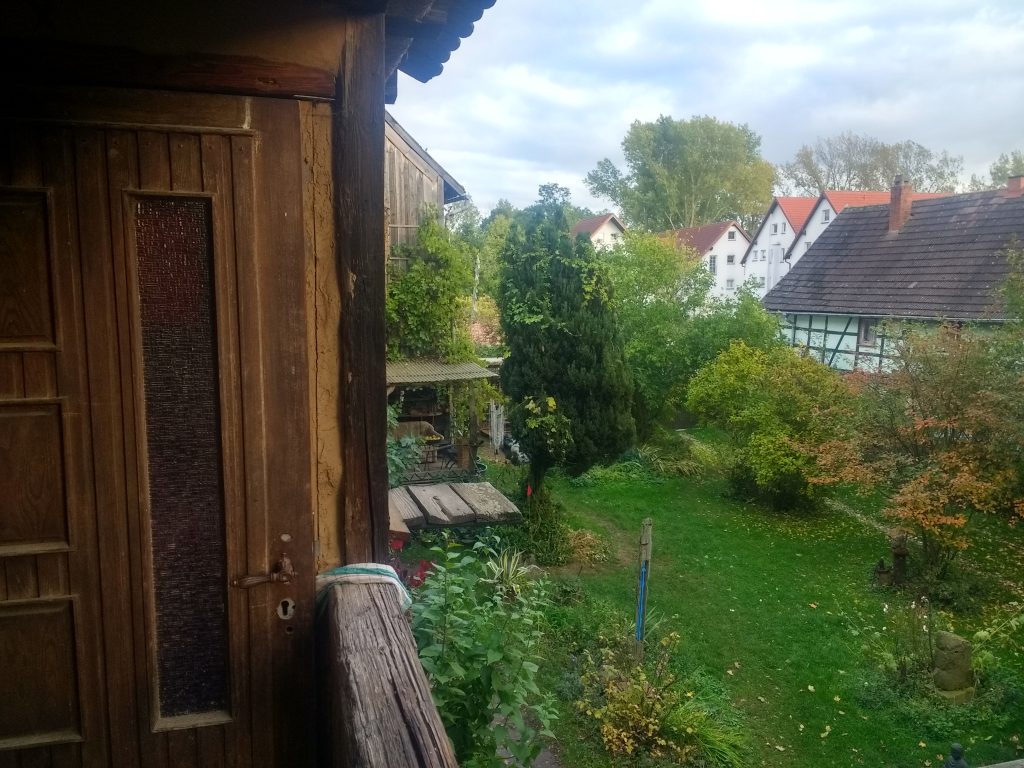
Another topic that I found interesting, and was a topic I had little knowledge on up till that point, was one of currency. One of the aims of the project is to strengthen local trade (as in barter) networks, and building a share economy, but the people of the project was not against the concept of money in itself. Where the problem lies is the way financial markets serve as a tool of domination and repression. The people have no control over the printing of legal tender. World financial markets, pegged to the dollar, are essentially at the whim of a few private families who control the Federal Reserve in the USA. This ensures that our system of interest and debt, keeps everyone chained to the system, while a tiny minority of elites reap the vast majority of wealth from the capitalist system. By using hegemonic currencies (dollar, euro, etc.) one maintains these oppressive systems of exchange. A solution to this was the implementation of regional currency, which instead of being tied to the dollar, would be tied to ‘land shares’. By investing in ‘land shares’, one buys a piece of land that would then goes to a local community organisation, to be used in a democratically decided way by the community. So one invests money to free up land for the regional autonomous community, and in return, receive currency (‘land shares’) for use in the local market. This would create a local currency tied to something real (land), freeing oneself from dependence on a rigged financial market, and ensuring that the wealth produced in a region stays in the region.
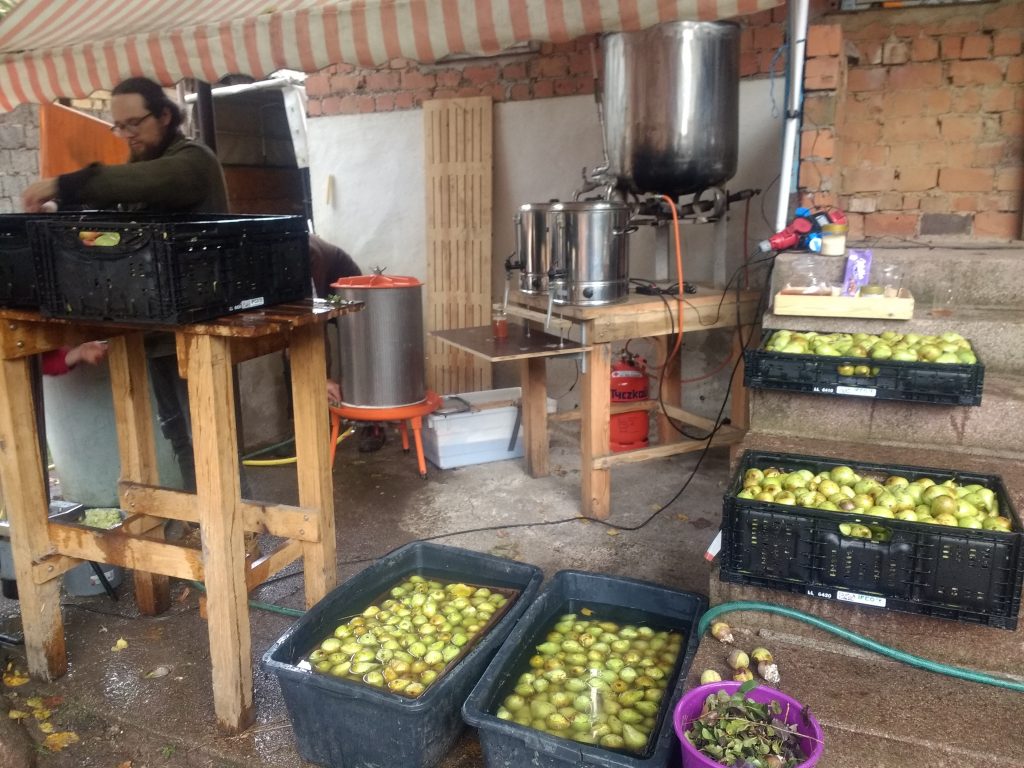

These were just some of the themes which came up in my short time in Lebensgut Cobstädt. Although in a small village in the countryside, the wider global context in which we exist in was constantly present in my mind. Sometimes people think of life on an eco-village as existing in a bubble, but my time in Lebensgut made me think of my life in the city as the real bubble. Living my day to day life, I was generally unconsciousness of the global consequences of my lifestyle. How could I be? The way everything is held together in industrial society is so complex, and stress clouded my mind. But now what is happening across the world is something we must start being conscious of. We are living in an incredibly important era – not only of human history, but of world history. The decisions we make now as a species will have vast, unforeseeable, consequences for the course of life on earth. At this very moment people, plants, animals, and ecosystems throughout the world are suffering immensely (but often silently) from a human made system of violence and destruction. But we can change this. By keeping the global implication of our existence in mind, by exchanging opinions and ideas, hopes, and fears, you don’t get as caught up in pull and flow of everyday life, allowing you to focus on what is important. And in a positive sense, keeping in mind how you’re is part of a global movement aiming toward the prosperity of life on earth gives you strength. What Lebensgut showed me was that regular exchange helps you to learn from others broaden your understanding, as well as helps develop new strategies, and inspire others to the movement.
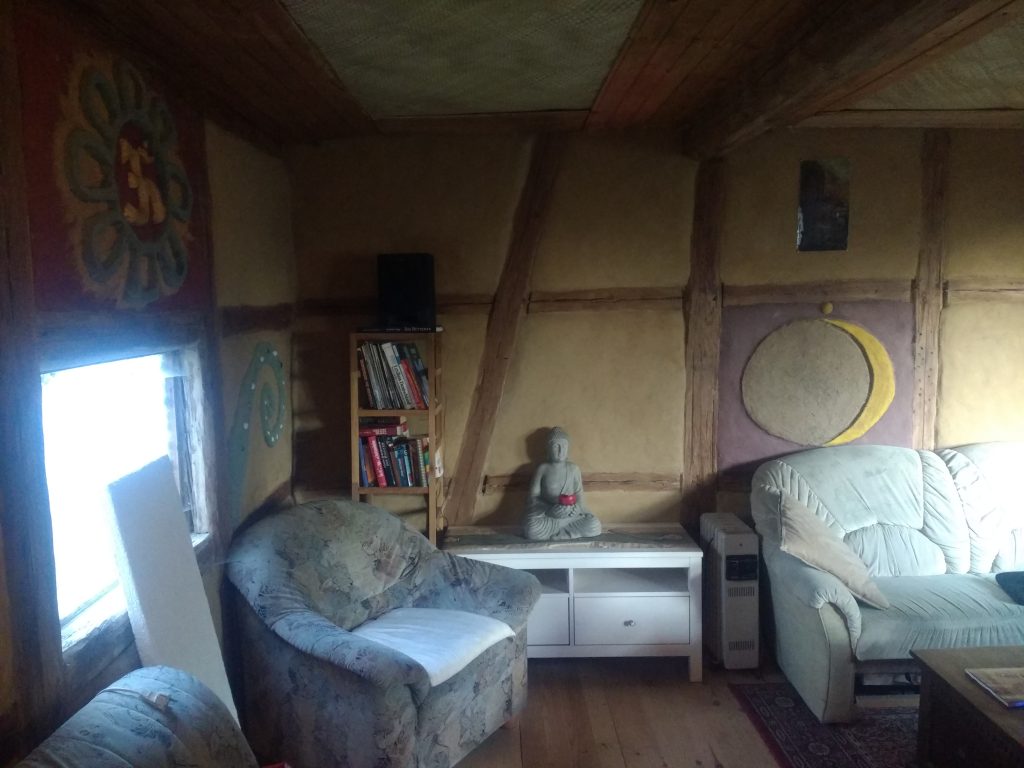
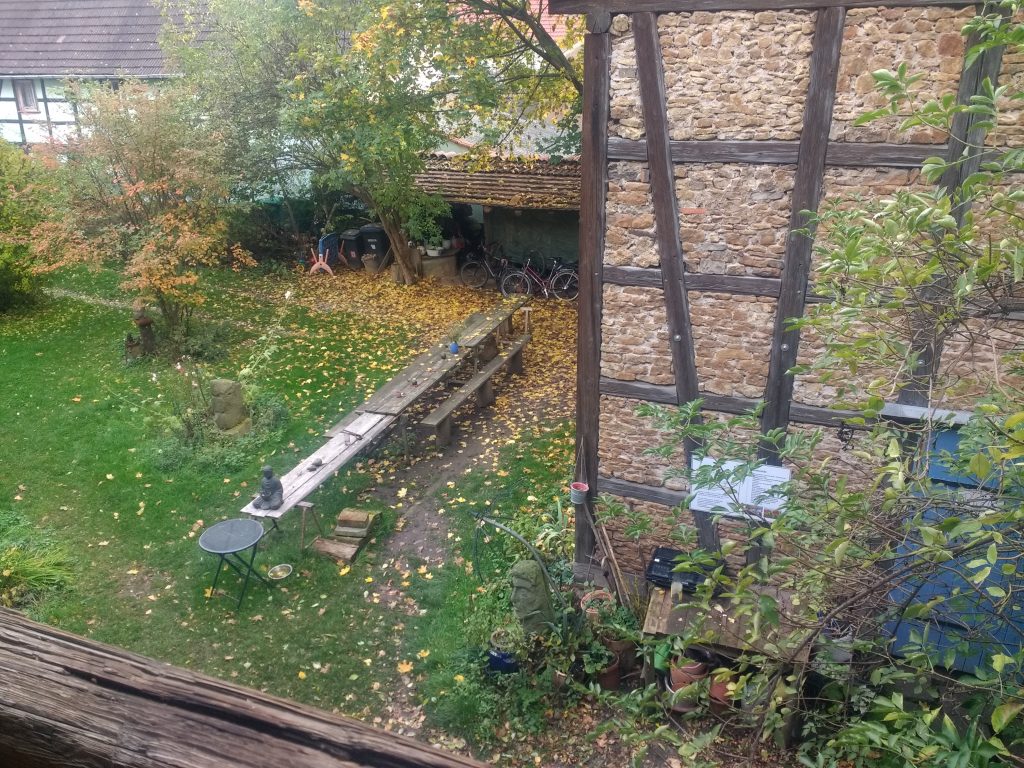
Fin
The model of social change pursued by the people at Lebensgut Cobstädt is the same type of anarchist transformation of society pursued by the likes of Mohandas Gandhi. This transformation can be thought of, and broken down, in many ways. Here let’s think of it as composed of three elements; economic, spiritual and the restoration of nature.
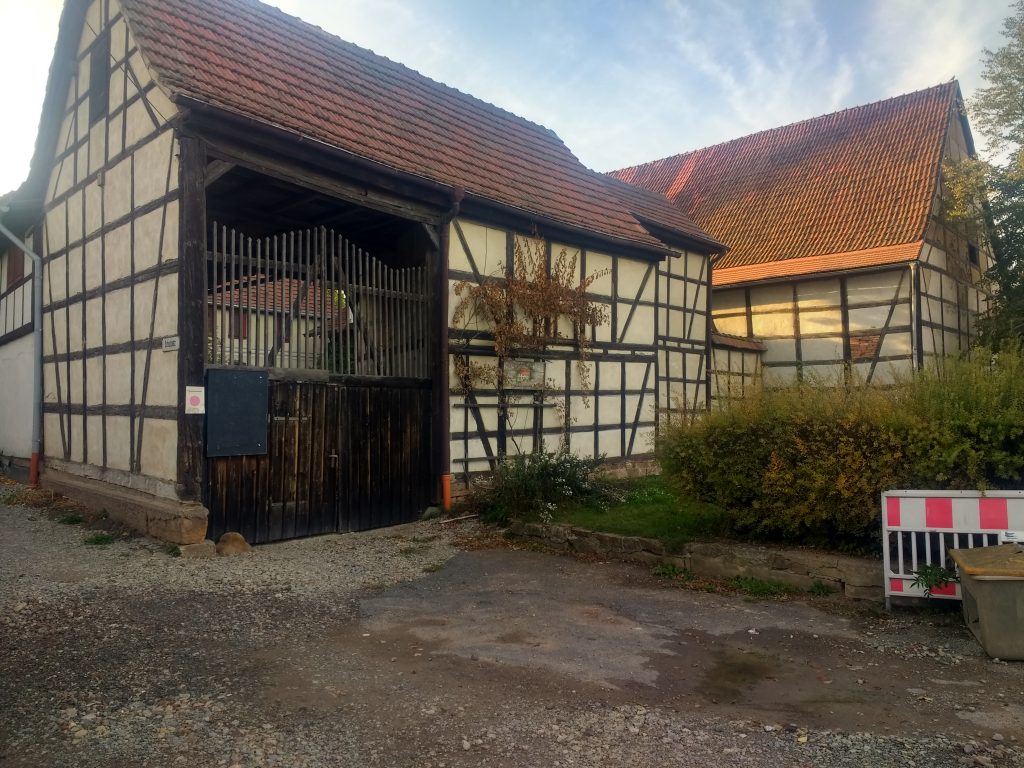
Although I am calling this first element economic, it can just as easily be described as social or political. Essentially, it is the creation of autonomous spaces, no longer reliant on the global, industrial, markets. A space is autonomous if it can provide all of the essentials of life. Well aware of this fact, modern society looks to create dependencies at every turn. Today we are born into a situation where we rely on global markets to feed, clothe, and shelter ourselves. How are we meant to transform or offer resistance to a system we rely on for our very existence? Independence is a word that was bandied around so much during the preceding few centuries that it’s meaning has been obscured. But no person, no parliament, can declare your independence. Each person (or community) has to it for themselves. Complete independence is obviously impossible, we are dependent on mother earth for our food, we are dependent on the to build communities and co-operation. So the question is – what do we want to be dependent upon? People around you, who you know and can have some shared ethical basis with – or a nebulous network of global elites who you know are destroying the earth and enslaving people? Lessening our dependency on global markets is no easy matter, but it’s not a zero sum game. We can start by lowering the degree of our dependency – focussing on the essentials. Once you are some way down the path (building skills, knowledge, resources) you are in a position to empower others to do the same. This process then becomes one of building regional, ethical, networks to render the global capitalist networks unnecessary.
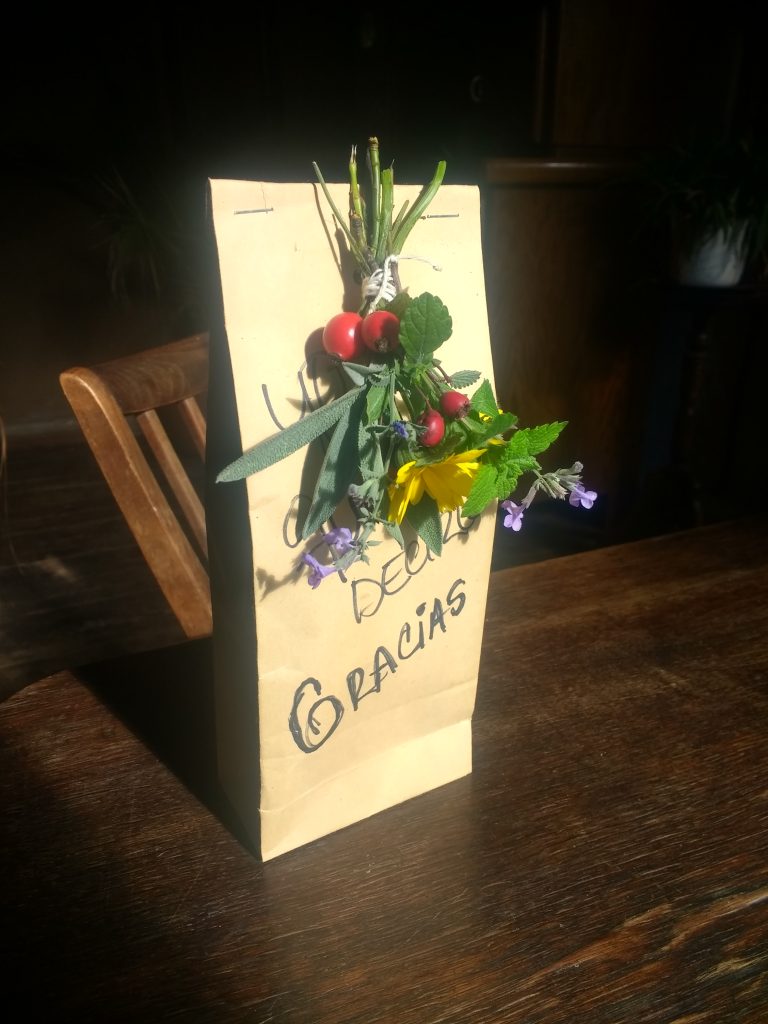
The next element of this transformation is spiritual; the transformation of society entails the transformation of consciousness. They are essential one and the same. The transformation of consciousness is both the means and the ends of societal transformation. Because of the spiritual domination of the Christian Church we have turned our back on the spiritual, and fallen prey to an all consuming secular materialism. Devoid of the spiritual nourishment we need, consumer capitalists have taken advantage of the situation by offering us an endless array of fleeting pleasures in its place. For those in the heart of the modern imperium, for the ‘lucky’ ones living in the materially wealthy centres of the industrial empire, a transformation to a ethical, sustainable society means breaking our addiction to consumer goods, and reconnecting with the essential.
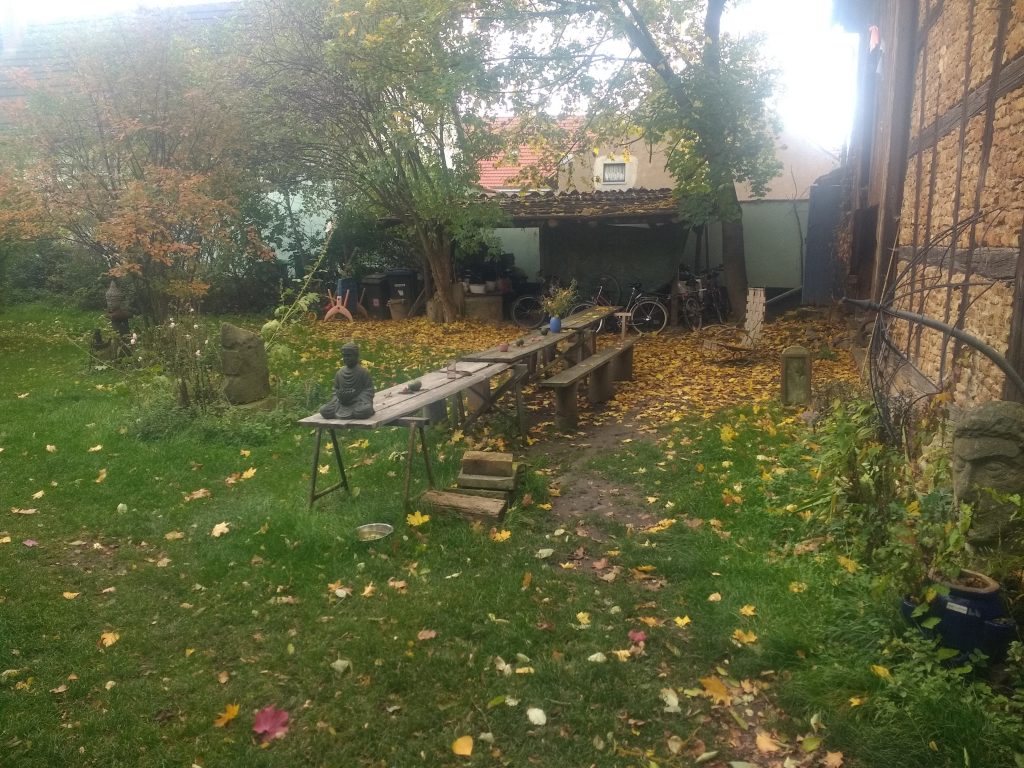
The third dimension of this transformation is the restoration of the natural world. Unless we start to reverse the effects of the industrial revolution and revive ecosystems, there is little point in transforming society, as the natural world upon which we depend will no longer be able to support us. And helping nature to heal not only has ecological effects. Anyone who has taken part in projects of landscape restoration will tell you that the healing of mother earth is, at the same time, the healing of the spiritual sicknesses of modern society (depression, alienation, meaninglessness). Perhaps also, on a large enough scale, this curative process could go some way toward healing to social wounds of colonial modernity.
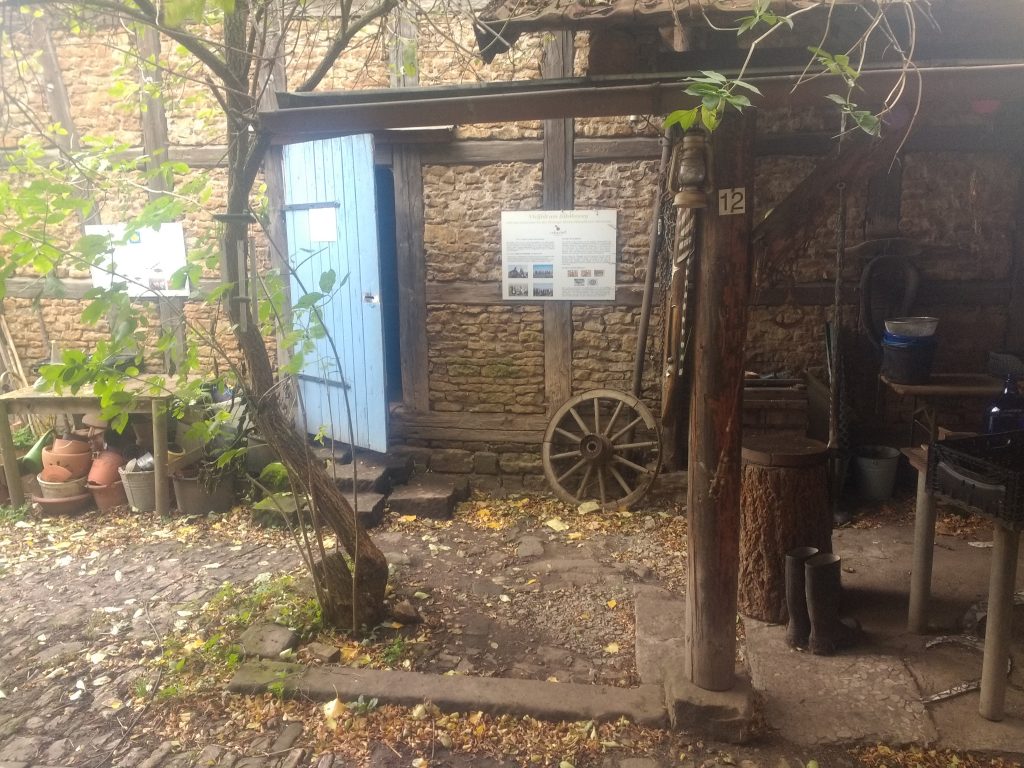
The people of Lebensgut, starting from nothing, built a life based on reducing dependence on unethical and destructive industry, a life where every day is a new opportunity for self-realisation, a life of joy, of connection with the essential. Throughout the years there has been a huge number of people coming and going through Cobstädt. From volunteers, to pilgrims, to curious visitors, to people who wanted to build a new life for themselves and even join the project. They have all been welcomed, been shown that another life, another system is not only possible, but preferable. Some of those, inspired by what has been achieved here, were given time and space to develop their skills, and carve out a place for themselves. Some, like at the Honigwein Schenke, renovated a house. Others built Wohnwägen. Those who joined are now helping to grow this autonomous space. The movement of empowering people gains strength – at the same time spreading a way of living that helps restore the rightful balance with the natural world.